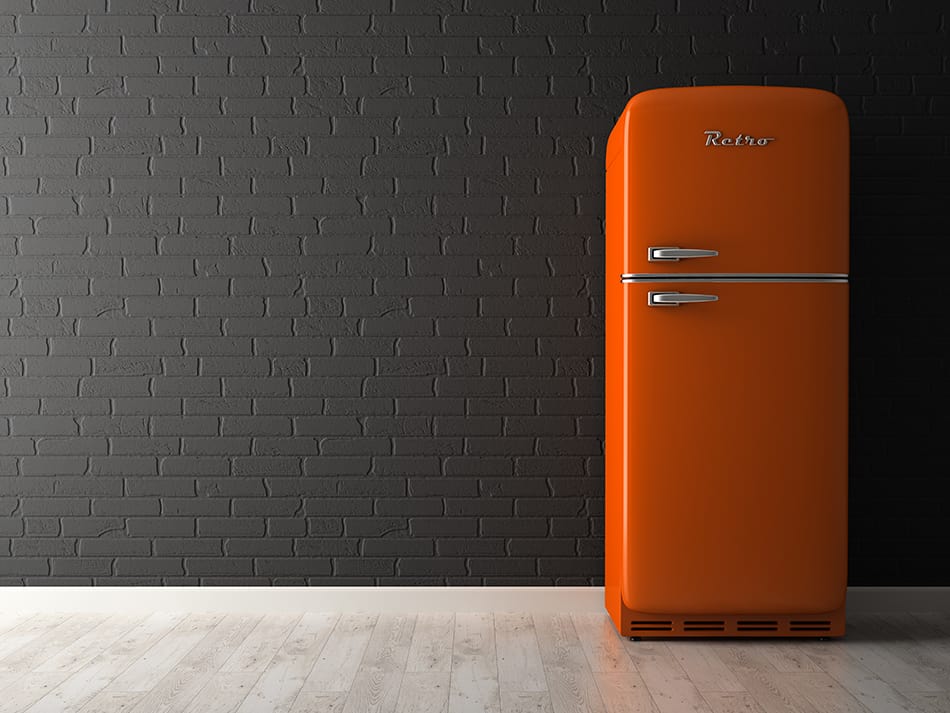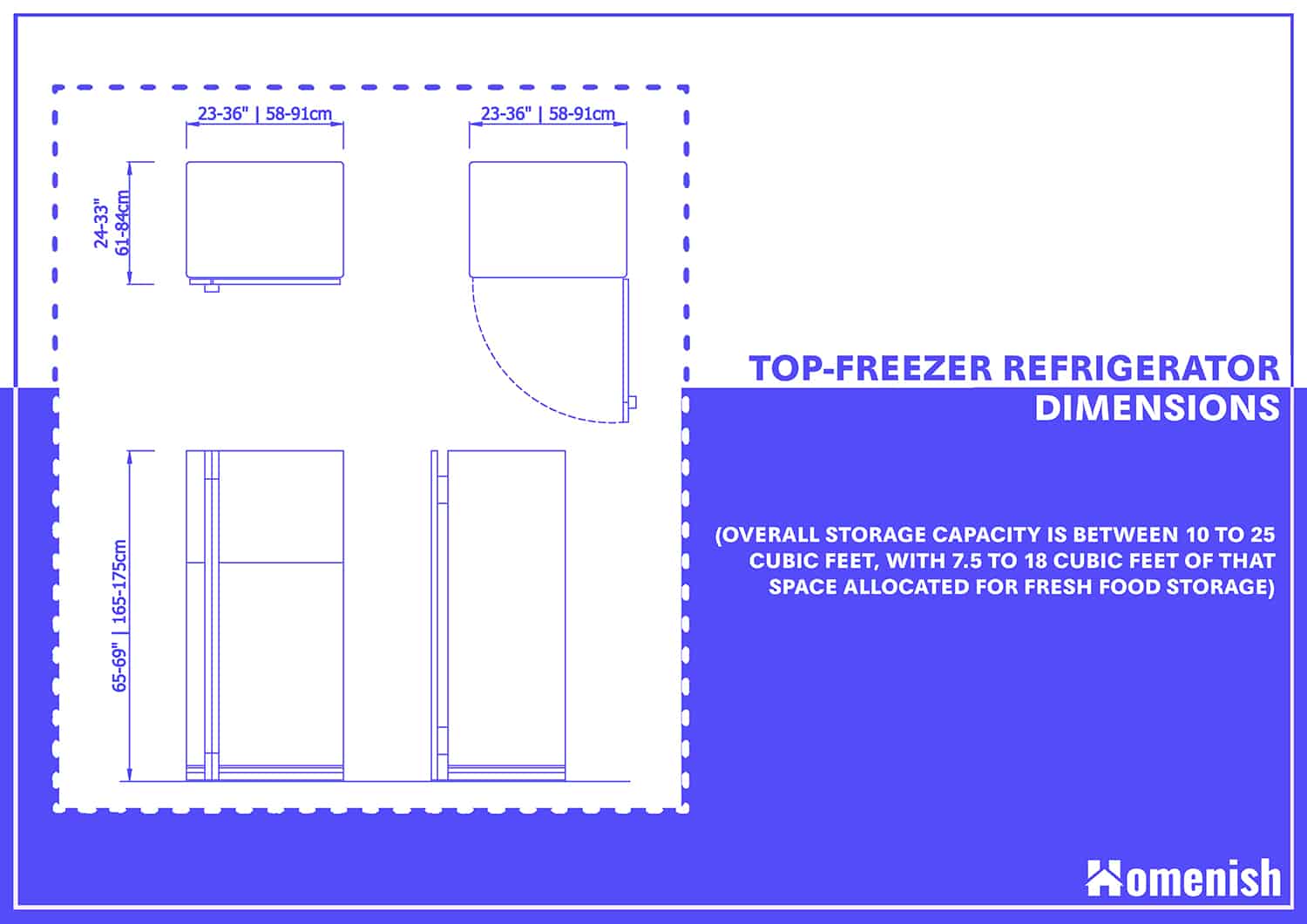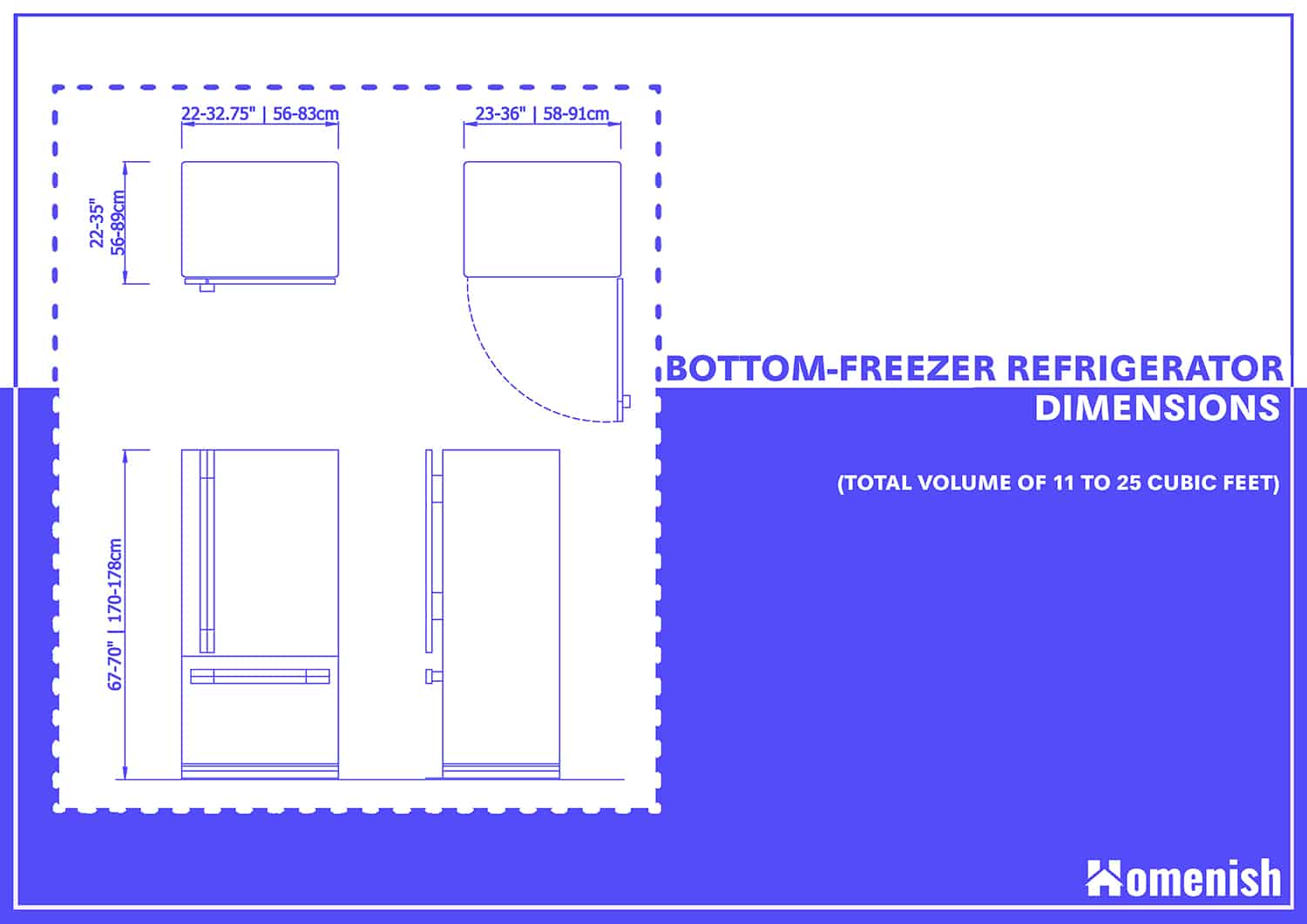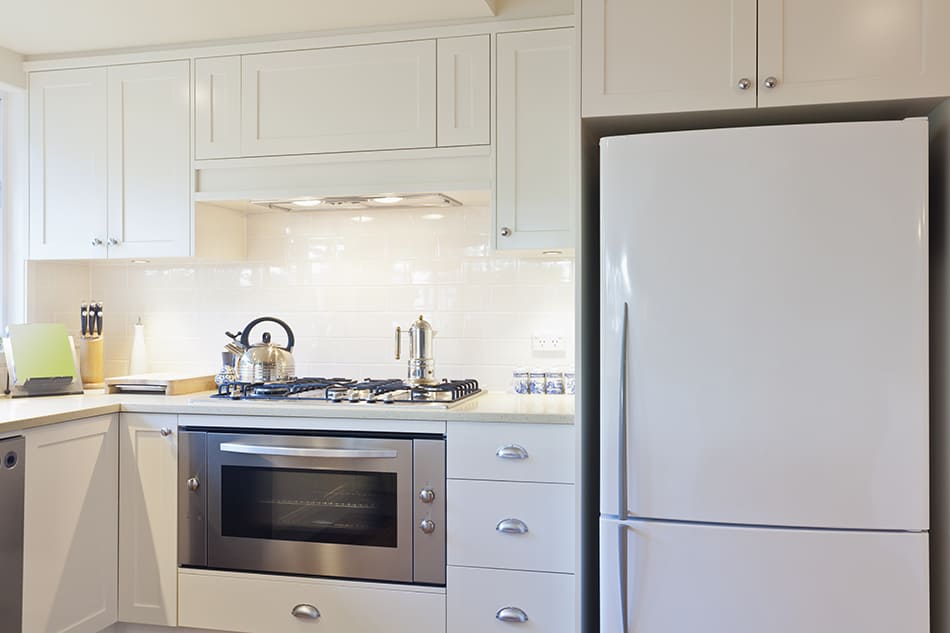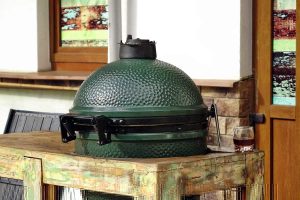Out of all the appliances in your home, refrigerators have the most variety in configuration and sizes available. While there isn’t a thing such as a standard fridge size, there are five main styles that offer different layouts and capacities to suit your family’s needs.
Top-freezer Refrigerator Dimensions
Top-freezers are the classic fridge style and have been popular since they were first introduced in the 50s. They are also known as top-mount. The A top-freezer unit has a fresh food compartment at the bottom and a smaller freezer section at the top. Both parts offer ample shelf storage space in the main cavity, while the refrigerator also has shelves inside the doors.
Since the fridge space has more volume than the freezer, it’s ideal for a household that buys a lot of fresh food. But, if you buy more frozen food or need to freeze big items, you’ll find that the freezer won’t adequately meet your needs.
You might also want to consider a different refrigerator style if you use the fridge more frequently than the freezer because the freezer occupies the prime eye-level space. A top-freezer also means you’ll need to bend every time you want to get things out of the fridge. However, top freezers remain popular because there are many entry-level and mid-priced options available.
Top-freezers are typically 23 to 36 inches wide and 65 to 69 inches high, with a depth of 24 to 33 inches. Their overall storage capacity is between 10 to 25 cubic feet, with 7.5 to 18 cubic feet of that space allocated for fresh food storage.
Bottom-freezer Refrigerator Dimensions
The bottom freezer is similar to the top freezer, except the fridge compartment is positioned above the freezer. This refrigerator style prioritizes the placement of fresh food by placing it easier to access at chest and eye level.
Modern styles of the bottom-freezer feature a freezer drawer that allows more flexibility to stack items or store oversized items, such as a tiered cake, without removing or adjusting shelving.
Bottom freezers are 22 to 32.75 inches wide and 67 to 70 inches high. Their depth ranges from 22 to 35 inches. They offer a total volume of 11 to 25 cubic feet.
Side-by-side Refrigerator Dimensions
As you can tell by the name, the most prominent feature of the side-by-side fridge are its two doors, positioned next to each other. The doors open from the center to reveal two storage areas.
On one side is the fridge compartment and on the other is the freezer. Depending on the fridge’s make and model, the refrigerator and freezer can have the same capacity, but the fridge is designed with more volume than the freezer in many cases. Side-by-sides have narrow doors, so swing clearance isn’t as much of a concern with this fridge style as it is with French door and top or bottom-freezer designs.
The fridge section of the side-by-side is equipped with a combination of shelves and drawers along its whole length, so you can place items like jars, yogurts, and packed food at eye or chest level. Fresh fruit, vegetables, and meat can be stored in the drawers towards the bottom.
Side-by-side fridges also have high-end features, like a water and ice dispenser and digital temperature control, but they are generally not as expensive as French door fridges.
A typical side-by-side fridge measures 30 to 36 inches wide and 29 to 35 inches deep. They range in height from 60 to 67 inches and offer a total volume of 22.5 to 31 cubic feet. Since some models allocate more space to fresh food storage, the fridge capacity can be anything from 14.5 to 20 cubic feet.
French-door Refrigerator Dimensions
The French door fridge – a multi-door fridge – offers three or more storage compartments and is ideal for large families. The refrigerator comprises two side-by-side doors that open up to reveal the main part of the fridge allocated to fresh food storage. Wide shelves separate the space in the main compartment. The convenient positioning of the refrigerator at eye level means that you won’t need to bend down to get things out.
The freezer section is beneath the fridge and consists of one or two drawers that slide horizontally. The drawers usually have bins so frozen goods can be stored neatly.
The French door is typically the widest style of the fridge and among the most expensive refrigerators you can find, and items like platters, large frozen pizzas, and casserole dishes can easily fit in its body. French door models are also usually the top-of-the-range options in many fridge brands.
A standard French door fridge is 67 to 70 inches high, 30 to 36 inches wide, and 29 to 35 inches deep.
Under-counter Refrigerators
Under-counter fridges are designed to be compact and to fit under your kitchen counter. As such, they are typically the smallest fridge style you can find. They usually have a single fridge compartment with two or three shelves, with some models including a small built-in freezer box with enough space for an ice tray or small tub of ice cream.
Under-counter fridges are widely used in hotel rooms as minibars and are ideal in studio apartments where kitchen space tends to be extremely limited. They’re also convenient for use in a bedroom or in dorm rooms.
A standard under-counter fridge is no more than 34 inches high, is 20 to 24 inches wide, and is 18 to 26 inches deep.
How Much Clearance Space?
If you have a kitchen island in front of your fridge, you’ll need to allow sufficient space for the fridge doors to swing open. The recommendation is to have 48 inches of clearance space, although side-by-side and French door fridges may require less since they have narrower doors. If your fridge has drawers, you’ll need 54 inches to open them comfortably.
Refrigerators also need clearance space all around the unit to ensure proper ventilation. Leave a minimum of half an inch between the fridge and the back wall. If your fridge is surrounded by cupboards on its sides and at the top, you should also leave half an inch between the refrigerator and the cabinets.
